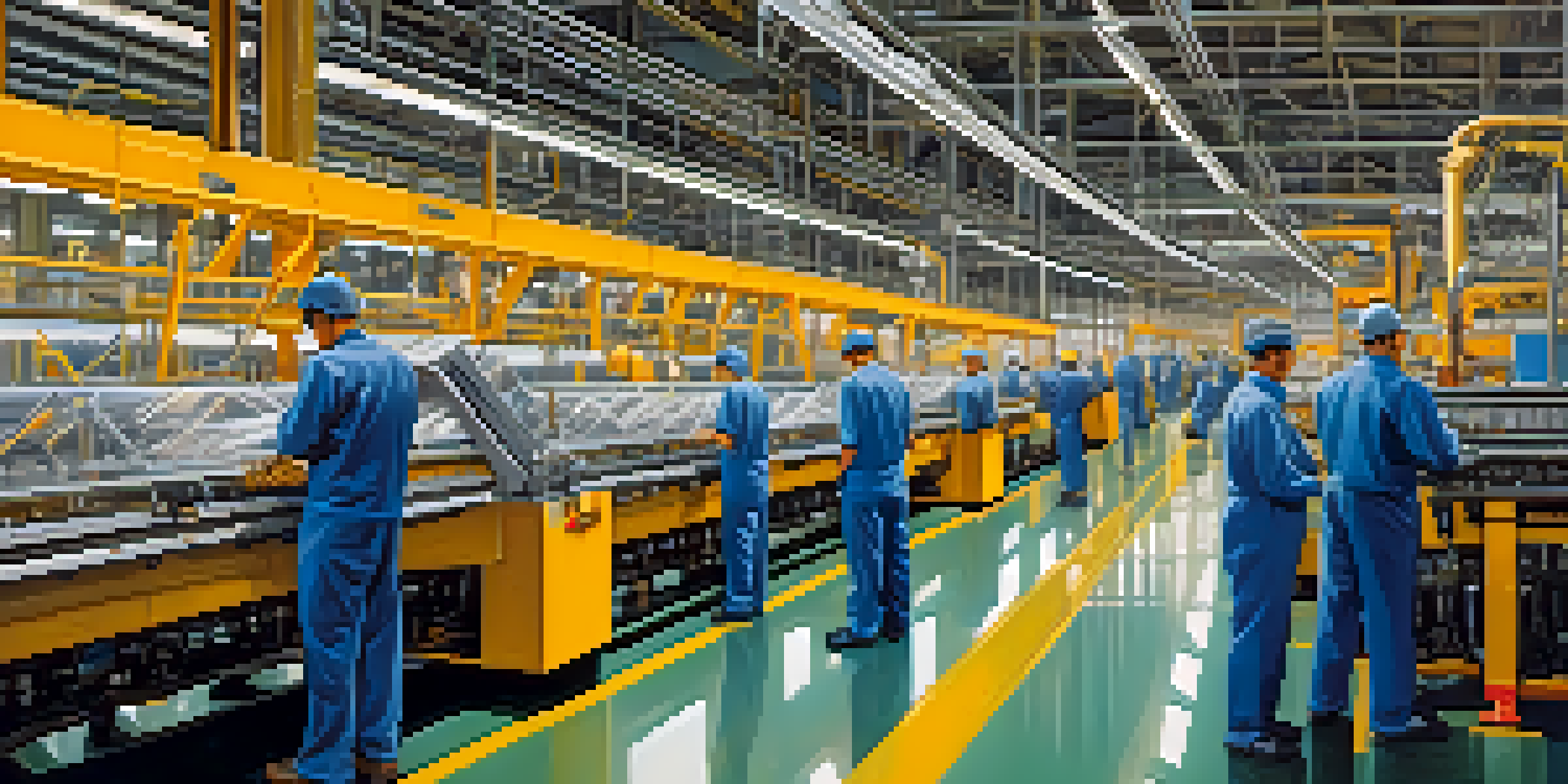AI Algorithms for Predicting Equipment Failure Events

Understanding Equipment Failure and Its Impact
Equipment failure can lead to costly downtime and maintenance, affecting productivity. Imagine a factory's assembly line suddenly halting due to a malfunctioning machine; the ripple effects can be significant. Businesses strive to minimize these occurrences, as they not only incur direct costs but also impact reputation and customer satisfaction.
The greatest danger in times of turbulence is not the turbulence; it is to act with yesterday's logic.
The unpredictability of equipment failure makes it crucial for companies to adopt proactive strategies. This is where predictive maintenance comes into play, leveraging data to anticipate issues before they arise. By understanding patterns of failure, companies can save time and money while maintaining operational efficiency.
Incorporating AI into this equation allows for more sophisticated analysis of equipment health. AI algorithms can sift through vast amounts of data, identifying trends and anomalies that human analysts might overlook. This leads to a more reliable and efficient approach to equipment management.
The Role of AI Algorithms in Predictive Maintenance
AI algorithms are the backbone of predictive maintenance strategies, providing insights that lead to better decision-making. They use historical data, real-time monitoring, and machine learning to predict when equipment is likely to fail. Think of it like having a crystal ball that helps technicians anticipate problems before they escalate.

These algorithms analyze various data points, such as temperature, vibration, and operational hours, to create a profile of each machine's performance. By recognizing patterns in this data, the algorithms can flag potential issues. This proactive approach allows organizations to schedule maintenance more effectively, avoiding unexpected breakdowns.
Predictive Maintenance Reduces Downtime
Adopting predictive maintenance strategies helps companies anticipate equipment failures, significantly reducing costly downtime and maintenance.
Moreover, the integration of AI improves the accuracy of predictions over time. As the algorithm learns from new data, its predictions become more reliable, ultimately leading to enhanced equipment lifespan and reduced maintenance costs. This continuous learning aspect is what sets AI apart from traditional maintenance methods.
Types of AI Algorithms Used in Failure Prediction
There are several types of AI algorithms that play a role in predicting equipment failures, each with its unique strengths. For instance, supervised learning algorithms use labeled datasets to train models, making them effective in scenarios where historical failure data is available. This is akin to teaching a child with examples, helping them recognize patterns over time.
Without data, you're just another person with an opinion.
On the other hand, unsupervised learning algorithms analyze data without predefined labels, identifying anomalies in operational patterns. This method can uncover new failure modes that were previously unnoticed, giving organizations a competitive edge. Imagine discovering hidden insights in a vast ocean of data where traditional methods fall short.
Finally, reinforcement learning, a more advanced technique, allows algorithms to learn optimal maintenance strategies through trial and error. It’s like training a pet; the more you reward the right behavior, the better it learns. This method can significantly enhance decision-making processes in dynamic environments where conditions change frequently.
Data Sources for AI Failure Prediction
The effectiveness of AI algorithms in predicting equipment failures relies heavily on data quality and variety. Data can be sourced from various points such as sensors embedded in machines, historical maintenance records, and even environmental factors. This diverse data pool helps create a comprehensive view of equipment health.
For instance, IoT (Internet of Things) devices play a pivotal role by providing real-time data, enabling algorithms to analyze ongoing conditions. Imagine having a constant stream of information about your machine's performance—this is the power of IoT in action. The more data available, the better the AI can predict potential failures.
AI Enhances Maintenance Decision-Making
AI algorithms analyze data to provide insights that improve decision-making, ultimately leading to longer equipment lifespan and reduced costs.
Moreover, external data sources, like weather conditions or supply chain variables, can also influence equipment performance. By integrating these various data points, organizations can achieve a holistic view of their operations, allowing for more accurate predictions and informed decision-making.
Challenges in Implementing AI for Predictive Maintenance
While the benefits of using AI for predicting equipment failures are clear, there are also challenges that organizations face. One significant hurdle is the integration of different data systems, which can be complex and time-consuming. Imagine trying to fit puzzle pieces together when they come from different sets; it requires effort and strategy.
Data quality is another critical issue. If the information fed into the AI algorithms is incomplete or inaccurate, the predictions will be flawed. Organizations must invest in proper data management practices to ensure that the algorithms have reliable data to analyze, which can be a daunting task.
Additionally, there is often a skills gap in understanding and leveraging AI technologies. Training staff to work with these advanced systems is essential for successful implementation. This means not only understanding the technology but also embracing a cultural shift towards data-driven decision-making.
Case Studies: Success Stories of AI in Equipment Maintenance
Several organizations have successfully implemented AI algorithms for predicting equipment failures, showcasing the technology's impact. For example, a leading manufacturing company adopted machine learning models to analyze sensor data from their production line. This initiative led to a 30% reduction in unplanned downtime, illustrating the tangible benefits of predictive maintenance.
Another instance involves a utility company that used AI to monitor its fleet of vehicles. By predicting potential mechanical failures based on historical data and real-time monitoring, they were able to schedule maintenance proactively, reducing overall operational costs. These case studies highlight how AI can transform traditional maintenance approaches into more efficient systems.
Data Quality is Crucial for AI Success
The effectiveness of AI in predicting failures relies on high-quality and diverse data sources, underscoring the need for robust data management practices.
These success stories serve as powerful examples for other organizations looking to embrace AI. They demonstrate not just the feasibility of the technology but also the potential for significant return on investment. By learning from these pioneers, companies can better navigate their predictive maintenance journeys.
The Future of AI in Predicting Equipment Failures
As technology continues to evolve, the future of AI algorithms in predicting equipment failures looks promising. Emerging technologies such as edge computing and advanced analytics are set to enhance the capabilities of AI systems. This means faster processing of data and more accurate predictions, which will be crucial as industries become more reliant on automation.
Moreover, the integration of AI with other technologies like augmented reality (AR) could revolutionize maintenance practices. Imagine technicians using AR glasses guided by AI to troubleshoot equipment in real-time; this could lead to quicker resolutions and improved safety. The potential for innovation in this space is vast.

Ultimately, the continued advancement of AI holds the promise of creating smarter, more resilient manufacturing environments. As organizations embrace these technologies, they will not only improve their operational efficiency but also pave the way for a more sustainable future in equipment management.